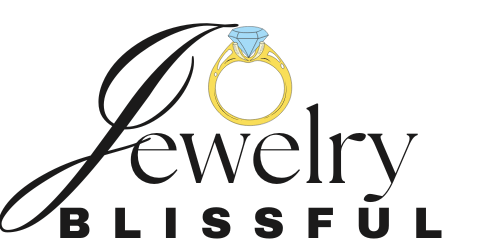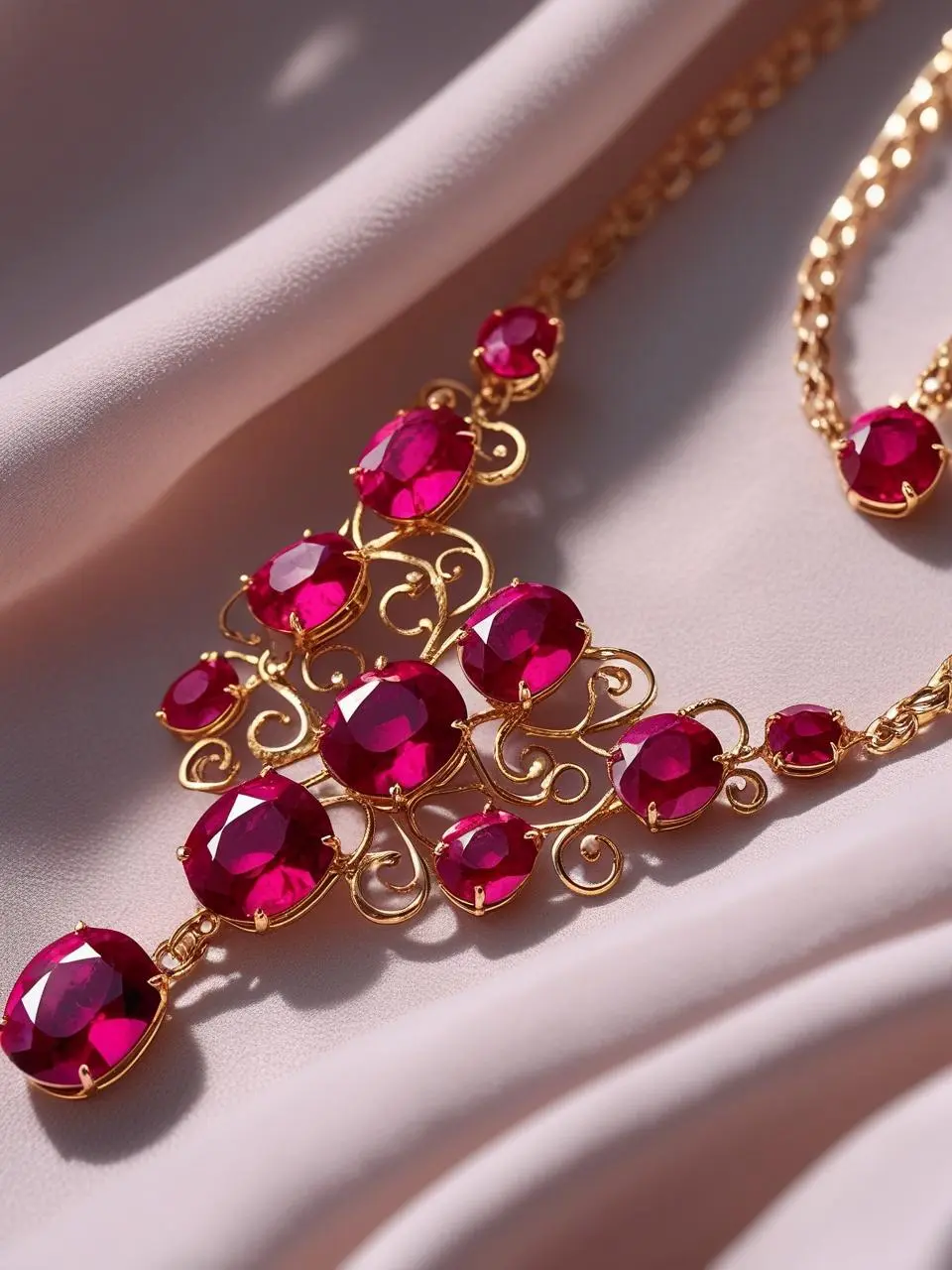Few pieces of jewelry capture attention quite like a ruby necklace. The vibrant red of ruby immediately draws the eye, evoking feelings of passion, power, and romance. Worn for centuries by royals and celebrities alike, ruby necklaces continue to captivate collectors and style seekers year after year.
The Enduring Appeal of Rubies
Rubies belong to the corundum family of gemstones, the same group as sapphires. What sets ruby apart is its unmistakable red hue, which owes its color to trace amounts of chromium. In many cultures, rubies symbolize vitality and success, and are often associated with the heart and love.
Their natural hardness—second only to diamond—gives rubies the resilience to withstand daily wear. This durability has made rubies a preferred choice for all types of jewelry, but especially necklaces, where the stone rests close to the skin and can truly shine. Some rubies display a beautiful phenomenon called asterism, where a star-like reflection floats atop the gem.
A Glimpse Into History
Rubies have played an important role in human adornment for millennia. Ancient cultures in India called rubies “ratnaraj,” meaning “king of precious stones.” They found their way into the crown jewels of emperors and were believed to protect warriors in battle.
Historically, many significant rubies come from Myanmar’s Mogok region, where the fabled “pigeon blood” stones were unearthed. These gems inspired admiration and desire throughout Europe and Asia, fueling legends about their mystical properties.
Throughout the Victorian and Edwardian eras, ruby necklaces were treasured gifts, symbolizing devotion and status. Even now, iconic pieces from those periods appear in auctions, fetching high prices for their craftsmanship and history.
What Makes a Ruby Necklace Special?
There are many reasons why a ruby necklace stands apart from other gemstone jewelry. While the color might seem the most obvious, the appeal runs deeper.
Visual Impact The intensity of a ruby’s red is unmatched. Its presence on a necklace, be it a singular pendant or a chain of stones, can transform a simple outfit into a statement. Rubies tend to look exquisite paired with diamonds, but they are equally striking in a gold or platinum setting, where the warmth or coolness of the metal enhances the gem’s glow.
Symbolism Rubies are entwined with legend and symbolism. In ancient Hinduism, offering a ruby to Krishna was seen as a path to rebirth as an emperor. In Western culture, rubies often denote love, courage, and passion—the perfect sentiments for a gift marking significant occasions.
Investment and Heirloom Quality Natural, untreated rubies have grown scarce, and their value has steadily risen. A high-quality ruby necklace can appreciate over time, making it more than just an accessory; it becomes an asset, and a possible heirloom to be handed down across generations.
Selecting the Right Ruby Necklace
Choosing the right piece can feel daunting given the variety of designs, qualities, and price points on the market. Focusing on certain key aspects ensures satisfaction and longevity.
Color Arguably the most critical factor when evaluating rubies. The best stones feature vivid, pure red with a hint of blue—commonly known as “pigeon blood” red. Look for stones that appear vibrant in all lighting.
Clarity Minute inclusions are typical but should not dominate the appearance of the stone. Eye-clean rubies are rare and command a premium, yet some inclusions can enhance the gem’s character.
Cut The way a ruby is cut can impact its sparkle, color saturation, and perceived size. Geometric vital cuts—oval, cushion, or pear—bring out the best in rubies, balancing color concentration with brilliance.
Carat Weight Larger rubies are significantly rarer and priced accordingly. For necklaces, both large centerpiece stones and an arrangement of smaller rubies can create stunning visual effects.
Origin Though Myanmar (Burma) leads historically in top-quality rubies, stones from Mozambique, Thailand, and even Sri Lanka now grace beautiful necklaces. Each region produces gems with slightly different hues and qualities.
Gold, Platinum, or Silver?
The metal that holds the ruby can make a substantial visual difference. Each metal type harmonizes differently with rubies:
| Metal | Tone | Effect on Ruby |
|---|---|---|
| Gold | Warm | Enhances rich, golden-red undertones |
| Platinum | Cool | Creates contrast; highlights clarity |
| Silver | Neutral | More accessible, understated shine |
Gold is traditional and amplifies the ruby’s warmth. Platinum exudes a modern vibe and frames the gem sharply. Silver suits minimalist designs and is more affordable.
Popular Necklace Styles
The diversity in design ensures there is a ruby necklace for every personality and occasion.
- Pendant Necklaces: A singular ruby, perhaps encircled by diamonds. Classic and elegant, suitable for everyday wear.
- Tennis Necklaces: A line of matched rubies, sometimes alternating with diamonds, for unmistakable glamor.
- Chokers: Rubies set close to the neck for a dramatic statement, often seen on the runway or red carpet.
- Bib Necklaces: A cascade of rubies, often mixed with other gemstones, creating a luxurious look often reserved for special events.
- Vintage and Antique Styles: Intricate filigree work paired with rubies, reminiscent of past eras, ideal for collectors.
Personalization and Meaning
Modern jewelers provide various ways to personalize ruby necklaces, making them intimate tokens for engagements, anniversaries, or birthdays. Engraving initials, incorporating birthstones, or choosing a design with hidden meaning adds layers of sentiment.
For July-born individuals, rubies are the official birthstone, making a necklace with this gem a thoughtful birthday surprise.
Caring for a Ruby Necklace
A ruby’s innate hardness makes it practical for regular use, but careful handling will preserve its luster over time. Here are a few guidelines:
- Store separately from other jewelry to prevent scratches.
- Clean gently using mild soapy water and a soft brush.
- Avoid harsh chemicals and ultrasonic cleaners, particularly if the ruby is filled or treated.
- Have prongs and clasps checked by a jeweler periodically.
High-value necklaces should be insured, and valuable stones periodically appraised to keep insurance values up to date.
Notable Rubies and Celebrities
A glance through archives of red carpet events will reveal countless celebrities wearing ruby necklaces. Elizabeth Taylor famously owned the Burmese ruby and diamond necklace by Cartier, a gift from her husband Mike Todd. This piece stunned the world and is still referenced in jewelry circles today.
Michelle Obama, Scarlett Johansson, and other modern style icons have shown how a ruby necklace can lend both classic grace and contemporary flair.
Buying a Ruby Necklace: Tips for Success
Here are some practical steps to guide a thoughtful purchase:
- Always ask for a certificate from reputable gemological labs like GIA or AGS when considering high-value pieces.
- If purchasing vintage or antique, ensure authenticity and check the condition of the settings.
- Visit trusted retailers or work directly with independent jewelers for custom work.
- If possible, view the ruby in natural daylight to assess its true color.
- Set a budget and compare prices to ensure a fair deal, keeping in mind the four Cs (color, clarity, cut, carat).
Making a Statement
A ruby necklace often becomes more than just jewelry—it’s an extension of identity, a personal talisman, or a celebration of love and life’s milestones. Whether chosen for its fiery beauty, symbolic rich history, or potential as a legacy piece, a ruby necklace always finds new admirers.
A well-chosen ruby necklace is truly timeless. Its enduring appeal spans cultures, generations, and shifting fashions, while the stone’s passionate energy smolders on. When worn, it doesn’t merely catch the light; it sets the stage.
Ruby Necklace: Frequently Asked Questions
Explore the allure and significance of ruby necklaces, an epitome of timeless beauty and elegance. Below are some common inquiries answered for those considering this magnificent adornment.
What makes a ruby necklace valuable?
The rarity and quality of the ruby gemstones contribute significantly to the value of a necklace. Key factors are the color, cut, clarity, and origin of the rubies used.
How should I care for my ruby necklace?
Store it separately, clean with mild soapy water, avoid harsh chemicals, and have it inspected periodically by a jeweler to maintain its pristine condition.
Why choose a ruby necklace over other gemstone jewelry?
Rubies symbolize love, passion, and courage. Their striking red color, combined with their durability, makes them a meaningful choice for both daily wear and special occasions. by royalty and warriors for their mystical properties and vivid allure.
How can I ensure the authenticity of a ruby necklace?
Request certification from reputable gemological labs such as GIA or AGS to verify the quality and authenticity of high-value pieces. high-quality rubies originate from?
Top-quality rubies historically originate from Myanmar, but Mozambique, Thailand, and Sri Lanka also produce exquisite stones.
What metal complements a ruby necklace best?
Gold enhances warm tones, platinum provides a striking contrast, and silver offers an understated elegance, each harmonizing differently with the ruby’s color.
Can a ruby necklace be personalized?
Absolutely. Many jewelers offer customization options like engraving or incorporating personal birthstones to enhance its sentimental value.

